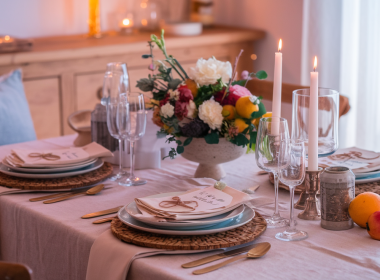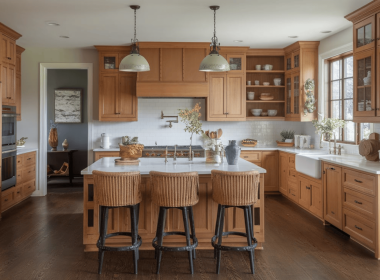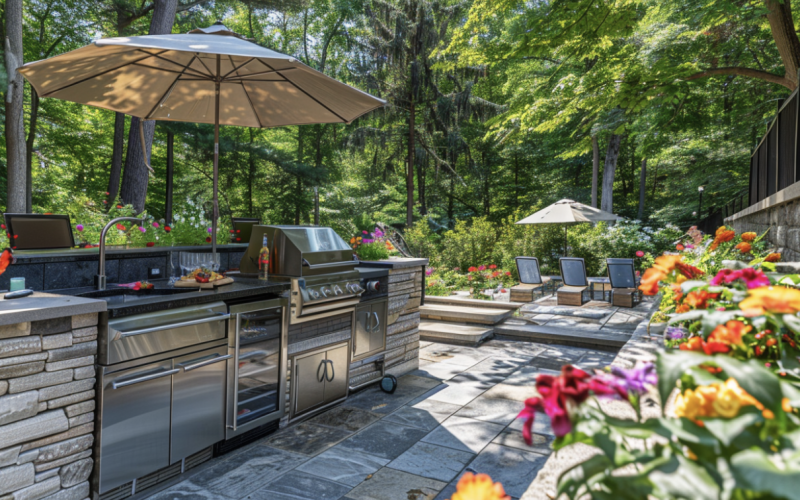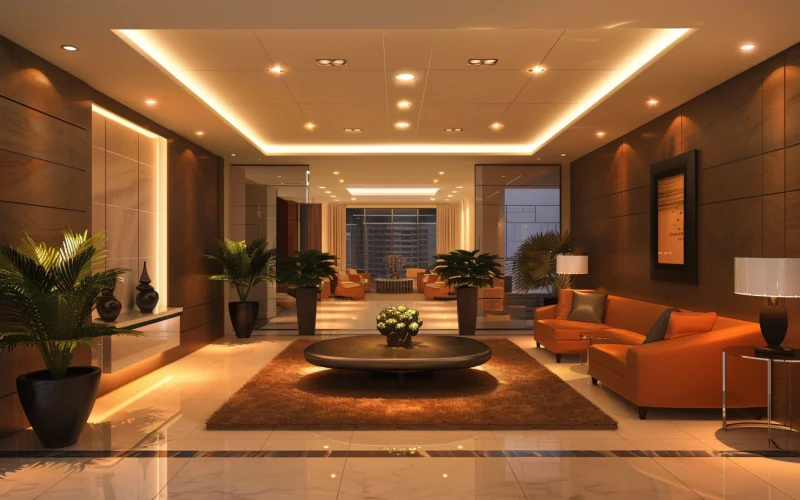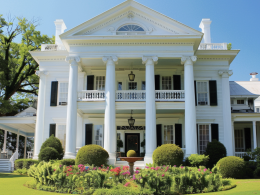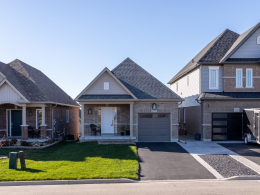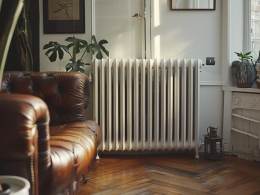Creating a comfortable and inviting outdoor living space is essential for many homeowners.
A well-designed patio roof protects from the elements and adds to the overall appeal of your home.
However, budget is often a major consideration when choosing a patio roofing material.
If you’re searching for inexpensive patio cover ideas, you’ll be happy to know several cost-effective options are available.
This blog post will explore the top 10 least expensive patio roofing materials, discussing their features, advantages, disadvantages, and cost estimates.
By the end of this article, you’ll understand which material best fits your needs and budget, helping you create a beautiful and affordable outdoor oasis.
Top 10 Least Expensive Patio Roofing Materials
1. Polycarbonate Sheets
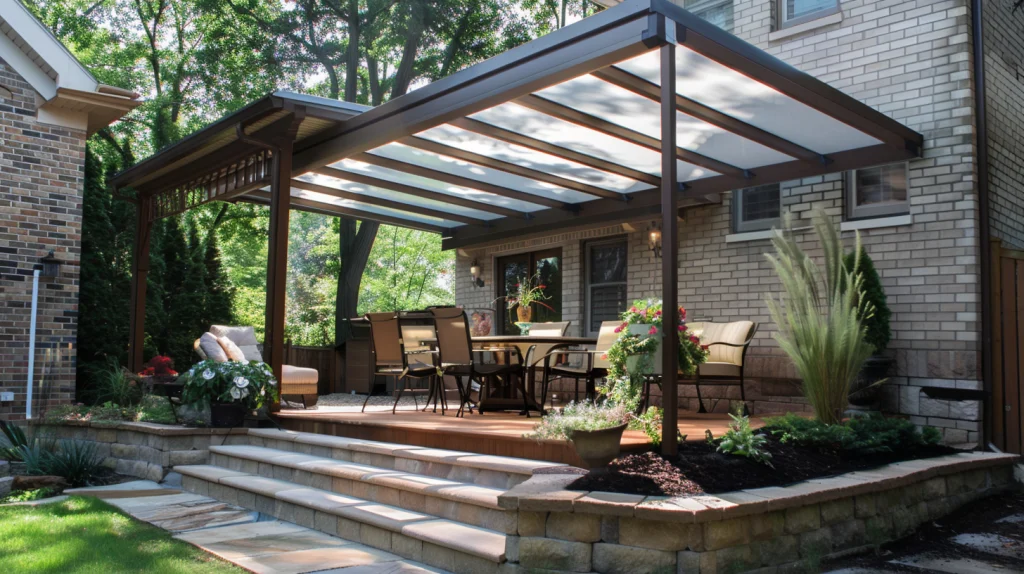
Polycarbonate sheets are lightweight, sturdy, and UV-resistant plastic sheets that provide an affordable patio roofing solution.
They allow natural light to pass through while offering protection from the elements. Benefits include easy installation, good durability, and low maintenance.
However, they may not be as visually appealing as other options and can be susceptible to scratching.
2. Corrugated Metal (Galvanized Steel or Aluminum)
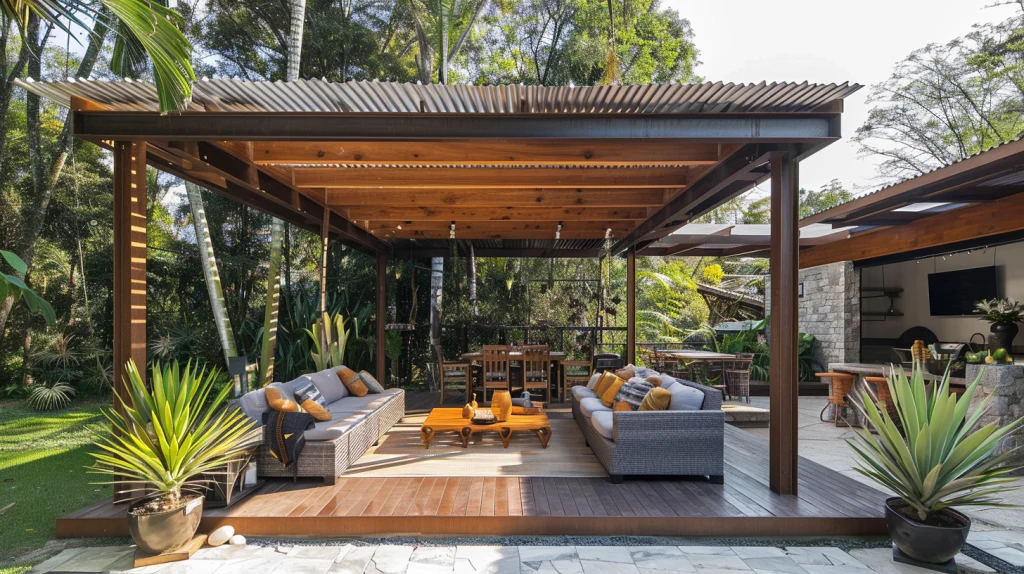
Corrugated metal sheets, such as galvanized steel or aluminum, are another budget-friendly patio roofing option.
They provide excellent durability and are simple to install and maintain.
The lightweight nature of corrugated metal makes it a great choice for DIY projects.
However, they can be noisy during rain and may not offer the best insulation.
3. Asphalt Shingles
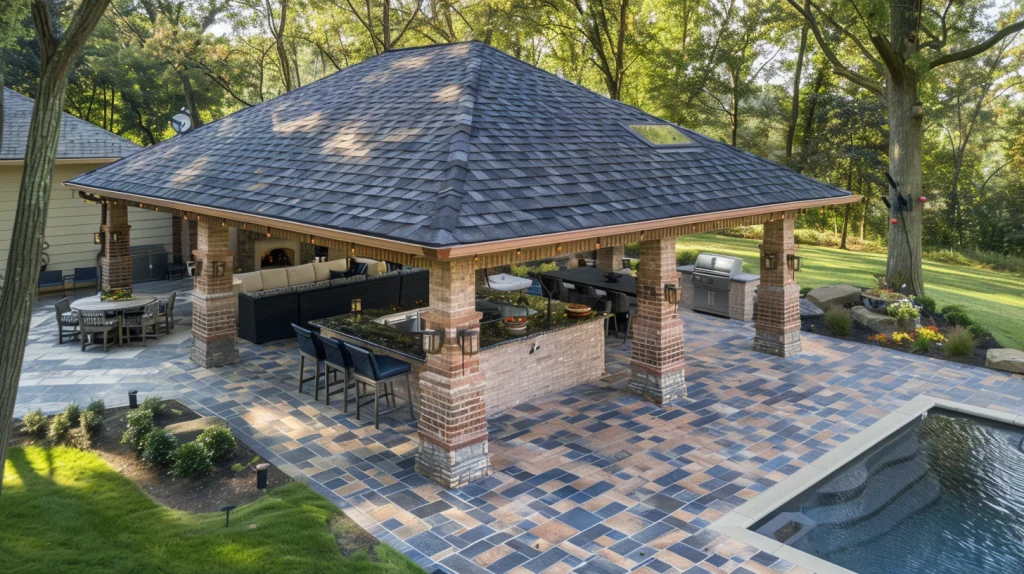
Asphalt shingles, frequently used for main house roofs, can also be used for patio covers.
They are affordable and available in various colors and styles, allowing you to match your patio roof to your home’s existing roof.
Asphalt shingles are relatively easy to install and provide good durability.
However, they may not be the most attractive option for a patio roof and can be vulnerable to damage in high winds.
4. Rolled Roofing
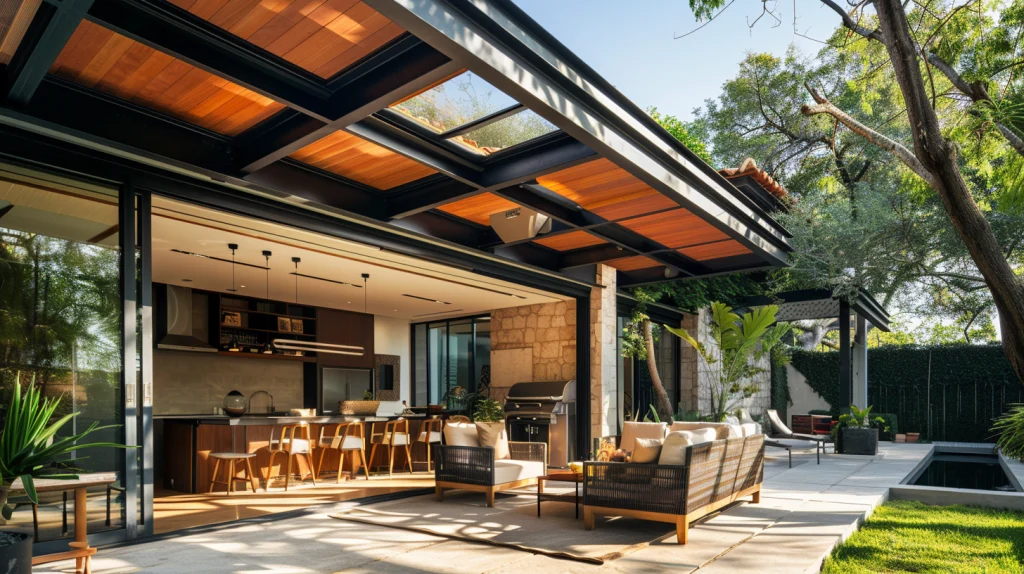
Rolled roofing is a low-cost, easy-to-install option made from oil-based asphalt and fiberglass. It is best suited for flat or low-slope patio roofs.
Rolled roofing is lightweight and easy to handle, making it a good choice for DIY projects.
However, it has a shorter lifespan than other roofing materials and may be less visually appealing.
5. Shade Cloth
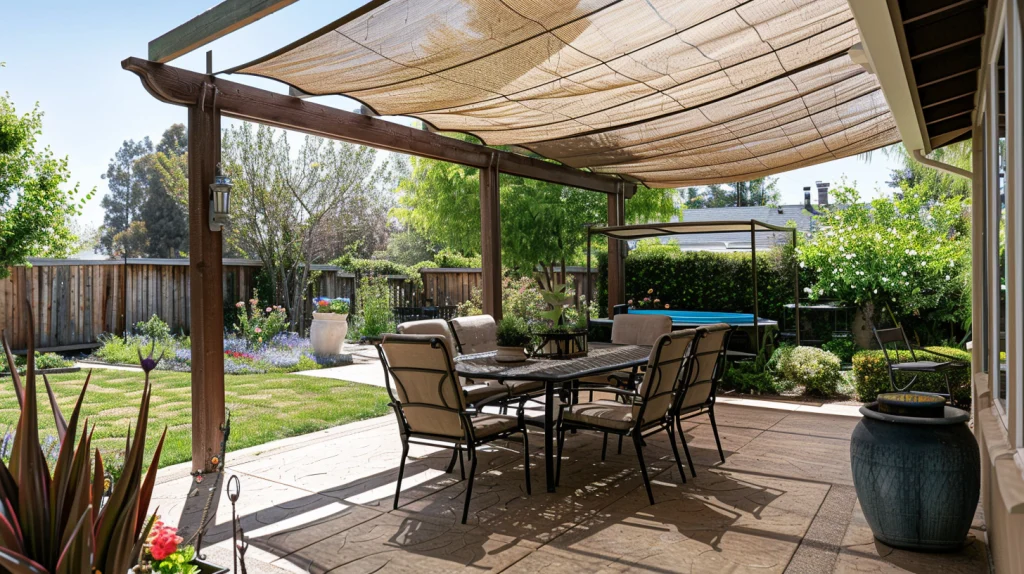
Shade cloth is a cost-effective option for creating a covered patio area without a solid roofing material.
It is a breathable fabric that blocks some sunlight and can be easily installed using a simple frame.
Shade cloth is lightweight, easy to handle, and has various colors and densities.
However, it may not provide complete protection from rain and may not be as durable as solid roofing materials.
6. Wood (Treated Lumber, Such as Pine or Cedar)
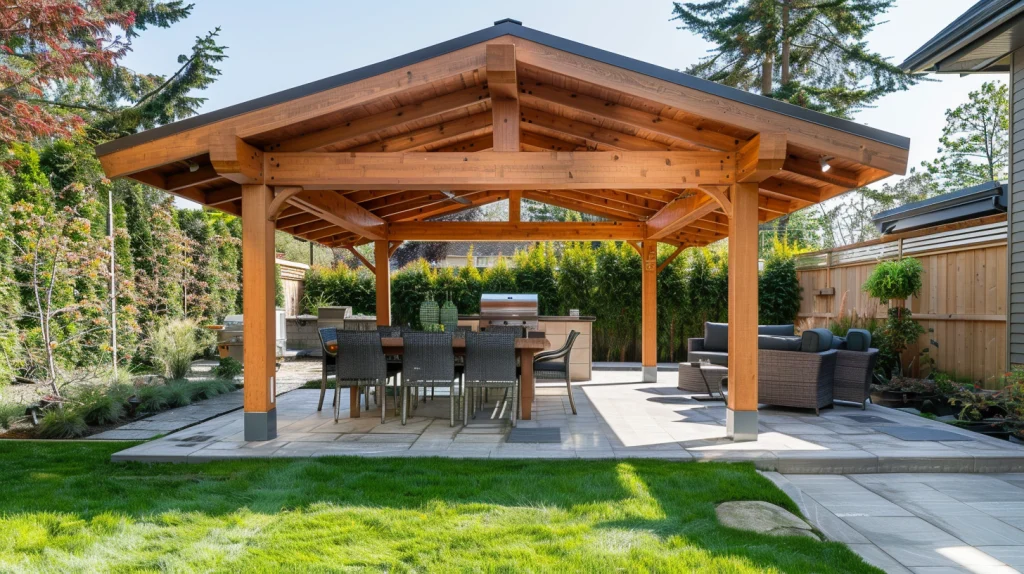
Treated lumber, such as pine or cedar, can be an attractive and relatively affordable option for patio roofs. You can create a pergola-style roof or a fully covered structure.
Wood offers a natural and warm aesthetic that complements many home styles.
However, wood requires regular maintenance to prevent rotting and weathering, and it may not be as long-lasting as other materials.
7. Bamboo
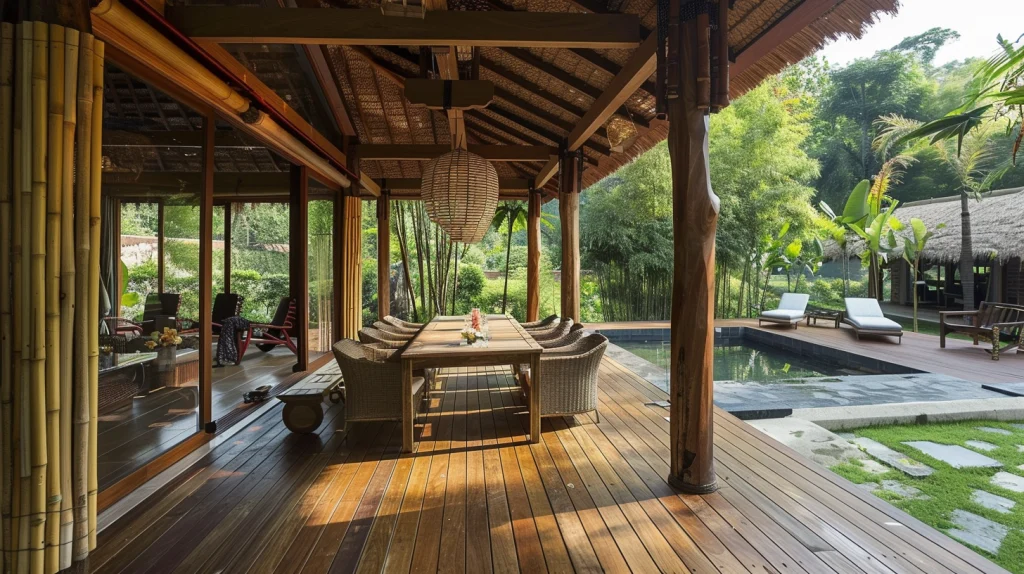
Bamboo is an eco-friendly and budget-friendly option for patio roofing. It provides a tropical, natural look and can be used to create a pergola or a thatched-style roof.
Bamboo is lightweight, durable, and resistant to insects and decay. However, it may require more frequent replacement than other materials and may not provide complete protection from the elements.
8. Vinyl
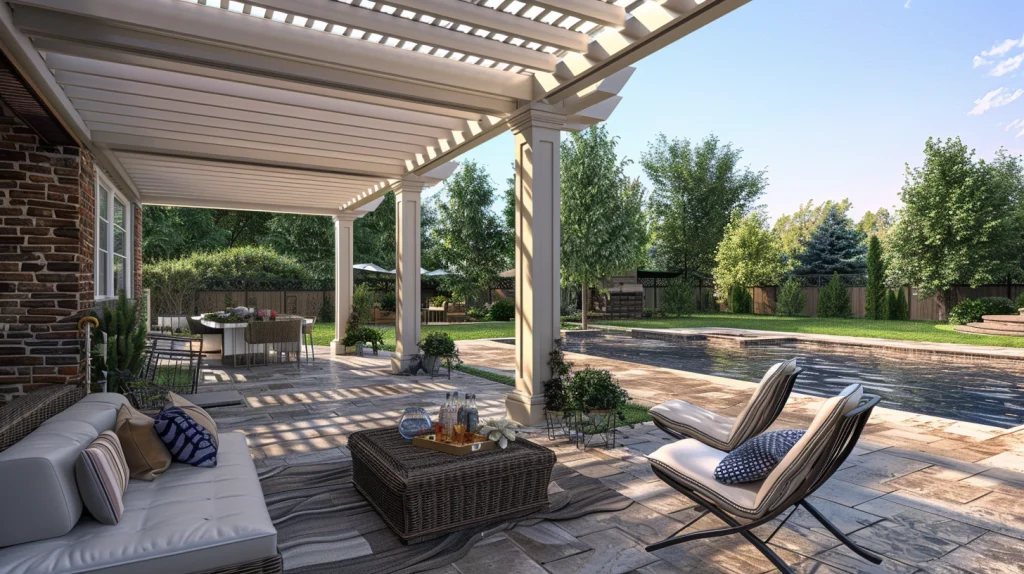
Vinyl patio roofing is a low-cost, low-maintenance, easy-installation option. It is available in various colors and styles and can effectively protect against the elements.
Vinyl is lightweight, durable, and resistant to moisture and insects. However, it may not be as aesthetically pleasing as other materials and can be prone to cracking or fading over time.
Vinyl patio roofing costs between $2 and $4 per square foot, making it a budget-friendly solution for many homeowners.
9. Fiberglass Panels
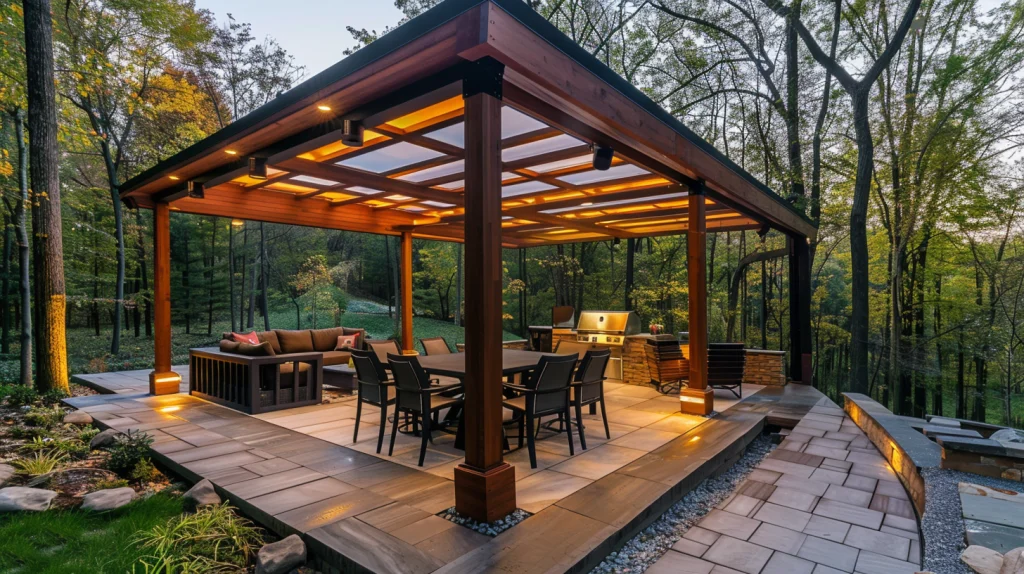
Fiberglass panels are lightweight, durable, and relatively inexpensive. They allow natural light to pass through while protecting from UV rays and weather.
Fiberglass panels are easy to install and maintain and come in various colors and opacities.
However, they may not be as aesthetically versatile as other materials and can be prone to cracking or yellowing over time.
10. Fabric Canopy (Retractable Awning or Shade Sail)
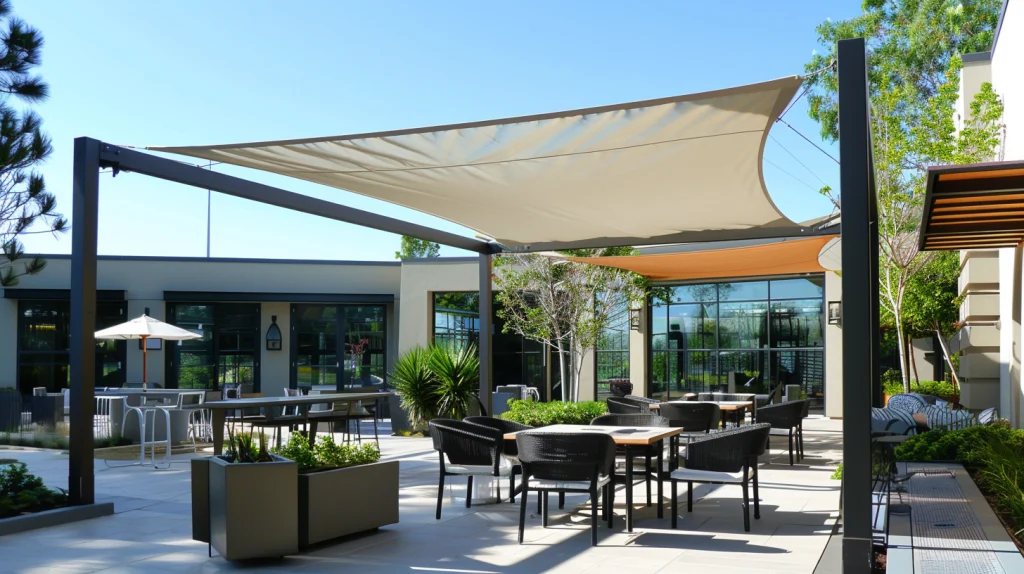
A fabric canopy, such as a retractable awning or a shade sail, is an affordable and flexible option for patio roofing.
These can be easily installed and removed and come in various colors and shapes.
Fabric canopies provide shade and protection from light rain, but they may not be as durable as solid roofing materials.
They are also susceptible to wind damage and may require more frequent replacement.
Factors to Consider when Choosing a Patio Roofing Material
When selecting a patio roofing material, it’s essential to consider several factors beyond just the cost.
Consider your local climate and weather conditions, as some materials may not be suitable for extreme temperatures or heavy rainfall.
Durability and maintenance requirements are also crucial, as you’ll want a material that can withstand the test of time with minimal upkeep.
Aesthetic appeal and compatibility with your home’s style should also be considered, as your patio roof should complement your existing architecture.
Lastly, consider the installation process, difficulty level, and the material’s eco-friendliness and sustainability.
DIY vs. Professional Installation
When installing your patio roof, you have two options: DIY or professional installation.
DIY installation can be a cost-effective solution, allowing you to save money on labor costs.
It’s a good option if you have the necessary skills, tools, and time to complete the project.
However, if you’re not confident in your abilities or lack the required tools, professional installation may be the better choice.
Professional contractors have the expertise and experience to ensure a proper and safe installation.
They can also help you navigate necessary permits or regulations, saving time and potential headaches.
Maintenance and Long-Term Care
Regardless of the patio roofing material you choose, regular maintenance and long-term care are essential to ensure its longevity and functionality.
Generally, it is a good idea to inspect your patio roof regularly for signs of damage, wear, or debris accumulation.
Clean your patio roof using a gentle cleaning solution and a soft-bristled brush.
Some materials, such as wood, may require annual sealing or staining to protect against moisture and UV damage.
Others, like fabric canopies, may need to be replaced more frequently due to wear and tear.
By following the specific maintenance requirements for your chosen material, you can extend the life of your patio roof and keep it looking its best.
Conclusion
Numerous options exist when searching for the least expensive material for your patio roof.
Each material has its benefits and drawbacks, from polycarbonate sheets and corrugated metal to shade cloth and fabric canopies.
While cost is an important factor, it’s crucial to consider your local climate, durability, maintenance requirements, aesthetic appeal, and installation difficulty when deciding.
Whether you opt for a DIY approach or professional installation, regular maintenance, and long-term care will help ensure your patio roof stands the test of time.
By carefully weighing your options and choosing the material that best suits your needs and budget, you’ll be well on your way to creating a beautiful and affordable outdoor oasis.
A place that you and your family can enjoy for years to come. All while keeping your inexpensive patio cover ideas in mind.

